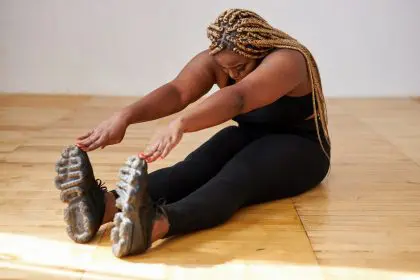Transform your mornings with expert-backed stretching techniques

The power of morning mobility
Stretching first thing in the morning might seem like a simple task, but it has the potential to unlock your body’s full potential and improve your overall well-being. For many, mornings bring with them muscle stiffness and decreased flexibility, leaving us feeling sluggish and stiff. However, integrating a well-thought-out morning mobility routine can transform the way you start your day, boosting both physical performance and mental clarity.
Understanding morning muscle tension
Muscle stiffness and joint restrictions are common after a night of sleep. During rest, the body remains in a relatively inactive state, causing muscles and joints to become tight. This stiffness, though natural, can affect your mobility, making it harder to move freely when you wake up. It’s important to recognize that this discomfort is a result of your muscles being idle and needing to warm up. Morning stretching helps ease the stiffness, improve flexibility, and increase circulation—allowing your body to function at its best from the moment you wake up.
The science behind stretching benefits
Stretching in the morning provides a range of benefits that go beyond just improving flexibility. When you stretch, blood flow to your muscles and joints increases, carrying essential nutrients and oxygen throughout your body. This improved circulation helps reduce muscle tension and stiffness, giving you a boost of energy to start the day. More than that, it can also improve mental alertness and cognitive function, ensuring that you’re physically and mentally prepared to tackle whatever comes your way.
Creating an effective morning stretch sequence
To maximize the benefits of your morning stretch routine, it’s essential to target key muscle groups and address the areas that often hold the most tension. A well-rounded morning stretch sequence should focus on mobilizing the spine, activating the lower body, and lengthening the muscles in the legs and arms. Here’s a strategic approach to incorporating effective stretches into your morning routine:
Spinal mobility sequence
Spinal mobility is crucial for preventing back pain and improving posture throughout the day. Start with gentle, dynamic movements to mobilize the spine and relieve tension.
- Lumbar trunk rotations: Hold for 15 seconds per side to gently rotate the lower back.
- Cat-cow stretches: Perform 10 to 15 repetitions to mobilize the spine and improve flexibility.
- Gentle spinal twists: Hold for 20 seconds per direction to target the mid-back and improve rotation.
Lower body activation
Stretching the legs, hips, and glutes is essential for improving flexibility and reducing tension.
- Single knee-to-chest holds: Hold each leg for 20 seconds to stretch the lower back and hips.
- Piriformis stretches: Hold for 30 seconds per side to target the hips and glutes.
- Hamstring stretches with strap support: Use a strap to stretch each leg for 30 seconds to improve hamstring flexibility.
Standing stretches
Standing stretches are great for lengthening and opening up the body.
- Downward dog pose: Hold for 30 seconds to stretch the back, shoulders, and hamstrings.
- Standing quad stretches: Hold each leg for 20 seconds to stretch the quads and hip flexors.
- Calf stretches against the wall: Hold each leg for 30 seconds to release tension in the calves.
Building sustainable stretching habits
Creating a successful morning stretch routine is all about consistency and gradual progress. To make stretching a sustainable habit, it’s important to set a realistic time frame, focus on proper form, and pay attention to your body’s needs. Here are some tips to build a lasting habit:
- Begin gradually: Start with just 5 to 10 minutes of stretching each morning. This allows your body to get used to the routine without feeling overwhelmed.
- Maintain consistent timing: Try to stretch at the same time every morning to make it part of your daily routine.
- Focus on breathing: Proper breathing during stretches helps improve oxygen flow to your muscles and allows you to relax more deeply.
- Stay hydrated: Drinking water throughout the day helps keep your muscles hydrated, which is important for flexibility.
- Listen to your body: If you feel pain during a stretch, back off slightly and try a gentler approach.
- Progress slowly: Gradually increase the time and intensity of your stretches as your flexibility improves.
Professional guidance and safety
While morning stretching can offer numerous benefits, it’s crucial to practice stretching safely. If you experience persistent pain or discomfort, have pre-existing medical conditions, or need modifications to your routine, consider consulting a professional. A physical therapist or fitness trainer can help you design a personalized stretching plan that addresses your unique needs and limitations.
Long-term benefits and wellness
Incorporating morning stretching into your routine can offer long-term benefits beyond just increased flexibility. By making stretching a daily habit, you’ll improve your posture, reduce your risk of injury, and enhance your overall physical performance. Regular stretching also helps manage stress and promote body awareness, making it easier to maintain good posture and a relaxed, comfortable body throughout the day.
Conclusion
Transforming your morning routine with strategic stretching can have a profound impact on your overall wellness. By dedicating time to stretch your muscles, you not only improve your physical flexibility and reduce tension but also set the stage for a more energetic and productive day. Start small, stay consistent, and listen to your body as you unlock the many benefits of morning mobility.















